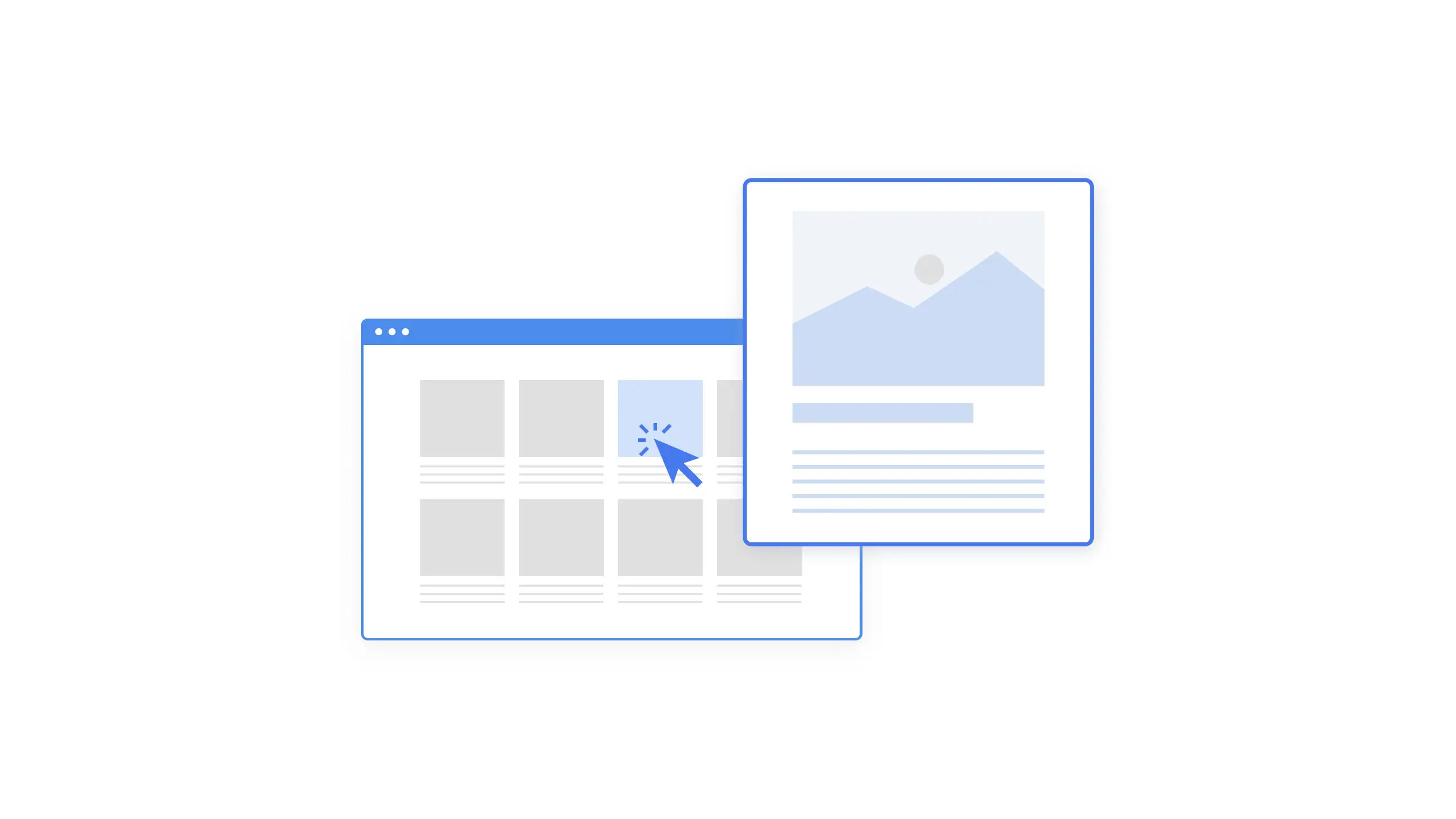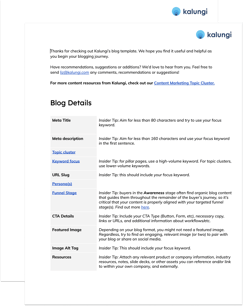Why ABM for B2B SaaS is an essential growth strategy
Stand out from the competition by adding ABM to your growth strategy. Learn the key benefits of implementing it in today’s B2B SaaS competitive...

Blogging is a cornerstone of SaaS inbound marketing.
One of the most important pieces of a content marketing strategy, a B2B company without a blog means your prospects and customers may never find you -- leaving the market untapped, resources unrealized and problems unsolved.
Many of us have heard Bill Gate’s famous quote “Content is king,” but few realize why it’s become such a critical element of B2B Inbound strategy.
At its very core, content is an educational asset for your readers, yourself, and your company. When you blog, you're making an effort to educate your industry peers or your ideal customer profile (ICP), previewing a solution that addresses the pains, fears and dreams of your market.
Because blog content can be short-form or long-form, net-new or revised and republished thought leadership, tutorials or user guides, or even videos with supporting materials, a blog’s capabilities and form are only constrained by your creativity.
Hubspot praises blogging for a few different reasons, the primary being a way to connect with your audiences and build trust. B2B Blog content attracts and guides your customers through the buyer’s journey by creating valuable content and experiences tailored toward them, thus solving problems they already have.
Let’s delve into the benefits of B2B blogging:
Posting blogs helps you achieve customer visibility. You get the opportunity to connect with your ideal audience and educate them on their problems (and how to solve them). By providing helpful, engaging content, you can gain the trust of your B2B audience and become their “trusted guide” throughout their buyer’s journey as they select solutions and make shortlists.
Share what you know with industry experts, use jargon (or not), or even make your interns a “guide” for how you work. The more you document your own knowledge, the more you can progress the industry as a whole, your co-workers, the people you manage, and even your clients.
Thought leadership is another essential part of marketing. By definition, thought leadership is:
“A method of marketing that solidifies you as an expert and authority within your leadership...with the goal of providing an entry point to your business by branding yourself as an expert.”
- Outbrain
A critical aspect of having a voice, being a thought leader drives website traffic, nurtures and converts leads, builds your brand’s authority, and creates a strong reputation within your industry.
As you begin to blog and promote your own content, you’re adding value to your industry’s vast database of educational digital resources.
Convinced you need to start writing?
Here’s how to kick off your very own blog:
The first step towards writing an effective piece of content marketing is understanding what you want to write about.
When brainstorming content about your work, ask yourself the following questions to identify potential topics:
If you’re reading these questions and still don’t know where to get started, it’s also helpful to think about the unique processes, systems or workflows you’ve developed as a guideline for your work. By summarizing and describing these actions, you can synthesize an engaging, actionable blog for your readers.
With every industry comes different challenges (and opportunities) for your strategy. While some of your competitors may not have a blogging strategy, you can still understand current conversations and industry solutions that are top-of-mind for your audience.
Often, webinars, longer guides or whitepapers, and other website information can provide a clear picture into competitor conversations and what people are currently interested in within your sector and industry.
If your company has an SEO plan and has defined top keywords and other KPIs for your long-term progress, you might already have topic clusters and keyword data to reference and guide your content. However, if your company has no SEO research for blogging, you can use free or paid keyword research tools to identify what keywords your target personas might be interested in learning about.
You can access the following keyword research tools and explore your own industry’s SEO data if you’re interested in learning more about this:
If this is your first piece of content, you may or may not already have a content marketing strategy and content marketing calendar outlined. If you don’t, that’s ok -- your content can still make an impact with the right positioning, even if it’s the only blog on your site.
But when you decide on your blog topic, you should inform your fellow co-workers and managers about your topic. This is an essential step for a few reasons: if you’ve never created blog content before, this will show your co-workers that anyone can blog and how straightforward it can be. If you do have content for your website, letting your peers know about your topic will help you avoid repeat topics, better align your overall strategy, and improve your SEO.
All content marketing calendars are different, and here at Kalungi, we like to identify the following for every piece of content on our content marketing calendars:
When planning your blog’s format, flow and topics, it’s important to incorporate the foundation you’ve already established in steps 1-3.
Remember to reference your company’s keyword research, topic gaps, and company personas and their fears and dreams. A great rule of thumb for creating compelling brand messaging is to clearly communicate the pains, claims, and gains of your audience.
If you’re still intimidated by writing a professional blog, the best way to familiarize yourself with this skill is to read other blogs in your industry.

Make a copy of the Kalungi Blog template to:
Now that you’ve done the hard planning and outlining, writing your blog should be easy. Don’t overthink it -- write like you’re talking to your coworker about your day at work, , because at the end of the day, blogging is about sharing knowledge in an engaging, helpful manner.
Here are the best practices for blog writing (as determined by the Kalungi team):
Before you send the blog to anyone else, read it out loud and pay attention to any sentences, words, or phrases that stick out or sound wrong.
Then, you can send this to your coworker, blog editor, manager or partner for extra eyes on your writing and an outside perspective with a different background. It shouldn’t be confusing to non-industry experts, so if you’re writing something that is very technical or uses jargon, consider how you can break it down even more and use the most simple terms.
Remember to explain the features, functions, and benefits: features are the literal tool names, functions are what the tool does, and benefits are what it does for you—why it’s important and why you could have a better life because of it. This golden triangle of messaging will guide you through many confusing conversations or presentations because we all have humanity in common. Solving problems is in our human nature so the correct positioning of the solution will ensure success.
This process might take 3-4 revisions, but that’s ok! It’ll get easier over time & a little effort will go a long way :)

Make a copy of the Kalungi Blog template to:
Stand out from the competition by adding ABM to your growth strategy. Learn the key benefits of implementing it in today’s B2B SaaS competitive...
How do you cultivate an active and engaged LinkedIn presence for your B2B SaaS product? In this blog, we’ll explore five ideas to get you started...
Here are some proven steps to help you generate ideas for blog articles, product names or your next startup endeavor. Start creating.
Be the first to know about new B2B SaaS Marketing insights to build or refine your marketing function with the tools and knowledge of today’s industry.